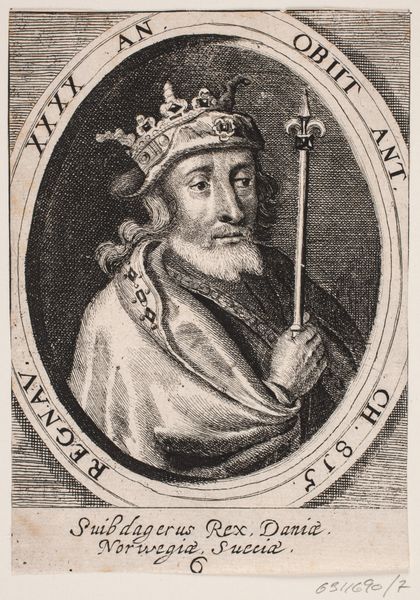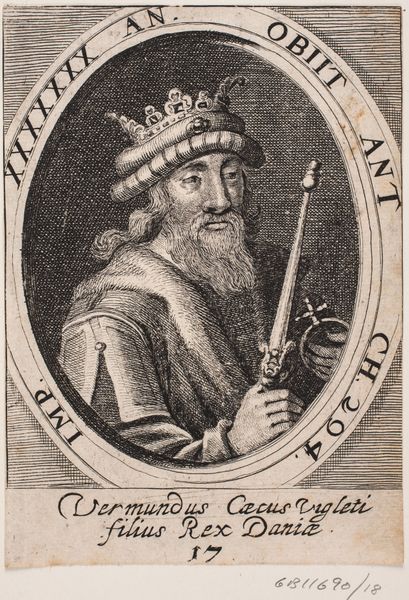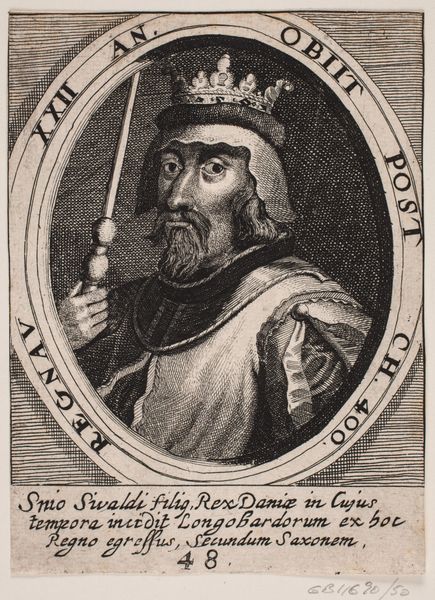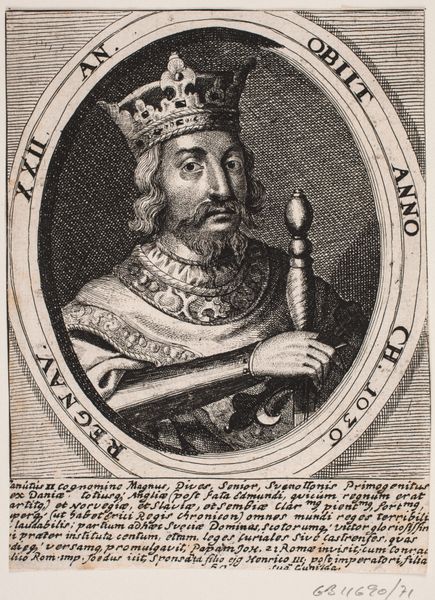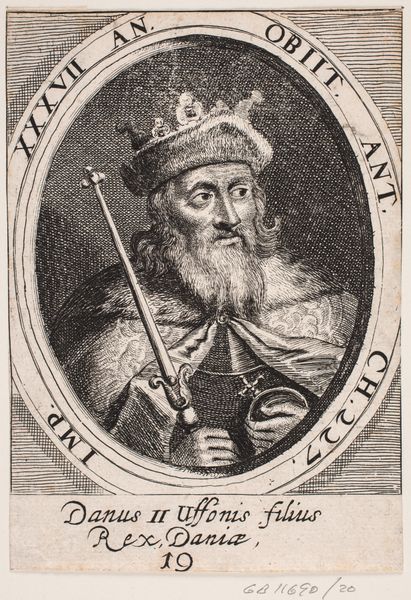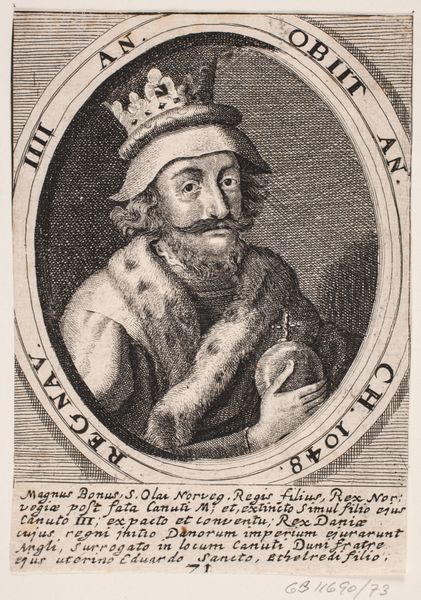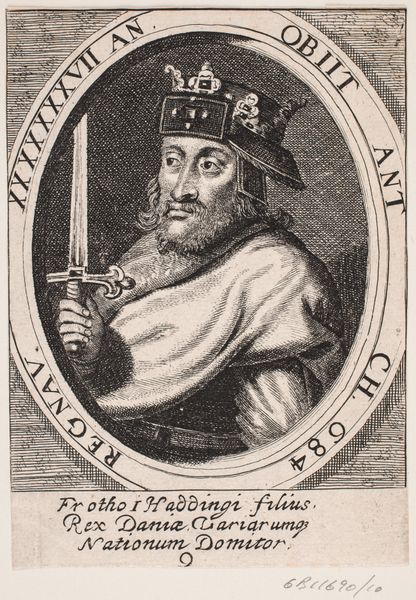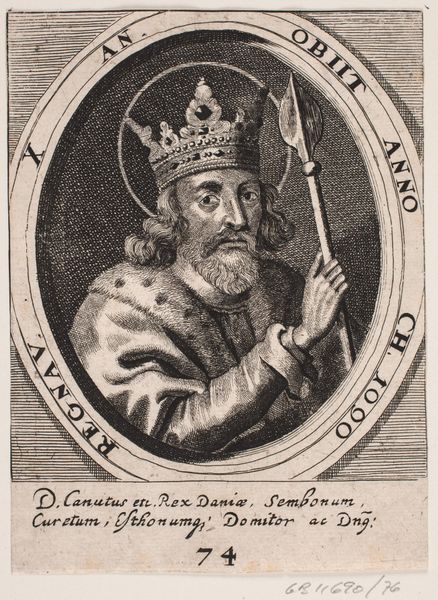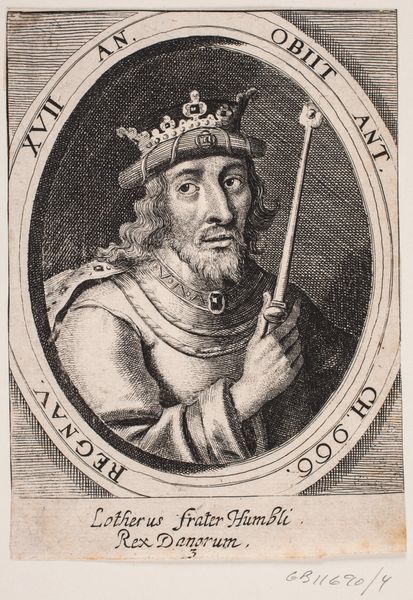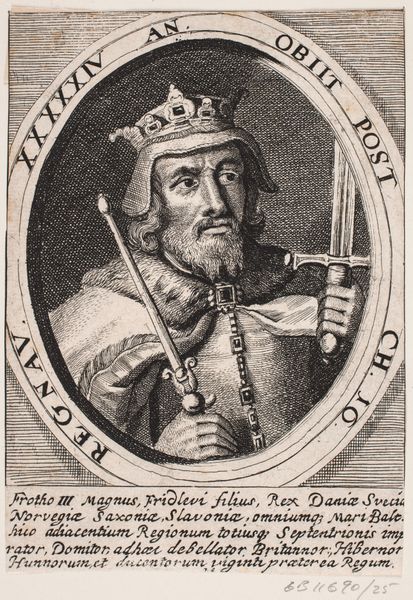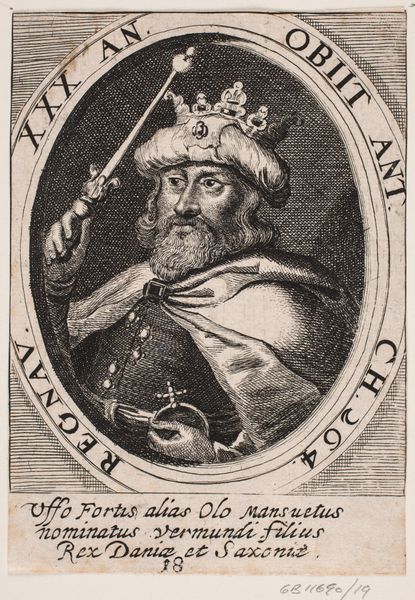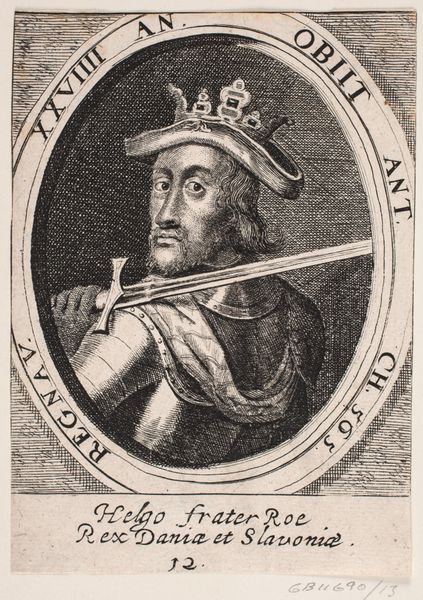
print, engraving
#
pencil drawn
#
facial expression drawing
# print
#
pencil sketch
#
old engraving style
#
caricature
#
portrait reference
#
pencil drawing
#
limited contrast and shading
#
portrait drawing
#
engraving
#
pencil art
Dimensions: 140 mm (height) x 100 mm (width) (bladmaal)
Curator: Here we have a print titled "Kong Høder," dating back to 1646, currently held at the SMK, the National Gallery of Denmark. Editor: My initial impression is one of solemnity. There's a starkness to the engraving, the fine lines creating a rigid yet refined depiction of this royal figure. Curator: It’s fascinating to consider the means of production. Engravings like this were crucial for disseminating images and ideas in the 17th century. The act of meticulously carving the image onto a metal plate, in reverse, demands immense skill and labor. How might the relative ease with which prints were consumed affected ideas about royal power, its accessibility, and permanence? Editor: Absolutely. And look at the orb and scepter he holds, these are timeless symbols of authority and dominion. The artist emphasizes them to connect "Kong Høder" with a legacy of kingship that stretches far beyond his own time. And note the crown, seemingly inspired by the crowns worn during the Renaissance period to reinforce claims of succession, dynastic consolidation, and historical justification. Curator: I'm particularly drawn to the text framing the image, “Hotherus nepos Suanhvidæ sorori Frothonis I. Rex, Daniæ, Sueciæ, Sclauoniæ,” Hotherus, nephew of Suanhvida, sister of Frotho I, King of Denmark, Sweden, and Slavonia, isn’t just a name. These carefully crafted letters speak volumes about the engraver's labor and craftsmanship. Consider how prints were instrumental in constructing notions of lineage, territory and ultimately, identity. Editor: And the artist utilizes the oval frame to focus our attention on Høder’s face. It is like looking through the looking glass onto another, different time period. His somewhat intense gaze confronts the viewer, asking us to grapple with the weight of history and its meaning, particularly as transmitted to us. Curator: Thinking about this print, and how it would have been used and distributed, prompts me to think about our modern modes of communication and artistic representation today. Editor: For me, it's been intriguing to consider how enduring symbols coupled with historical representation work to transmit meaning across centuries.
Comments
No comments
Be the first to comment and join the conversation on the ultimate creative platform.

